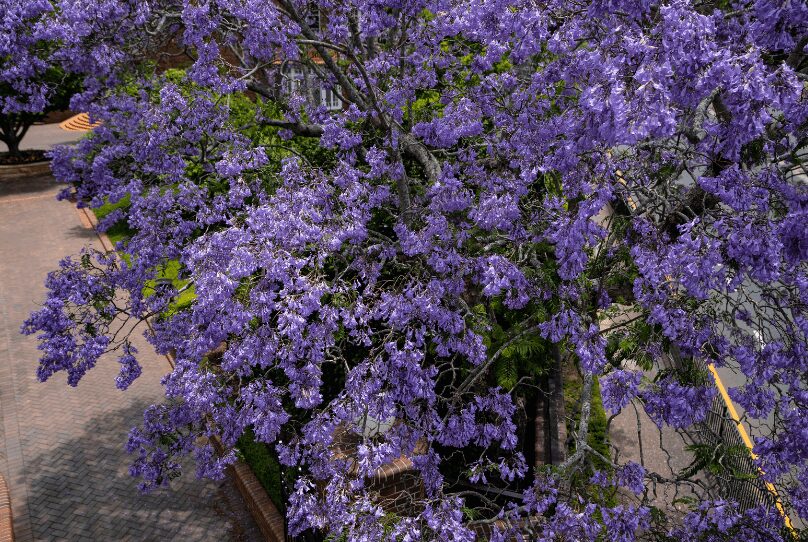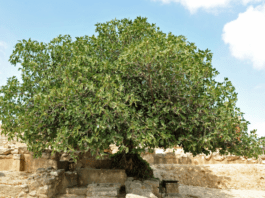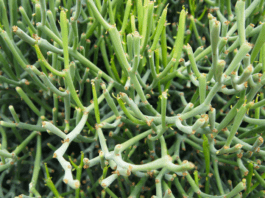Growing And Propagating Jacaranda Tree
Jacarandas will grow in virtually any soil provided it is not too cold and wet. However, they do not prefer to be overwatered in summer and enjoy a reputation of being fairly drought tolerant.
How Fast Does The Jacaranda Tree Grow
In a tropical setting, the jacaranda tree grows approximately ten feet each year during its first few years. Its growth rate fluctuates according to the climate it is grown, slowing to a modest rate outside of its optimal tropical environment.
Depending on where it grows, the jacaranda tree is typically semi-evergreen or deciduous, depending on when it is planted.
Only eight-year-old or older mature jacaranda will flower from late spring to early summer (though the tree can flower in warmer areas at any time).
Native to South America, this plant has become invasive in numerous world regions.
They often look their best in a front garden or overarching a drive or patio where they infuse light and create an air of serenity.
How To Grow Jacaranda Tree
They are not particularly difficult to grow as they are grafted onto the standard blue seedling form in late spring using a simple side graft.
How to Grow Jacaranda From Seeds
The fruits of the jacaranda tree are a one to a three-inch-wide, dry, brown pod that usually matures in late summer.
To harvest the seeds for replanting, remove the dried seed pods directly off the tree (pods that have fallen to the ground might not contain seeds).
- Soak the seeds for 24 hours in water.
- Place the seeds in seedling containers or pots on a bed of potting soil. You should cover them with a thin layer of potting soil and keep them moist.
- The seeds ought to germinate between two to eight weeks.
- Eight months must pass before transplanting the seedlings.
Propagating Jacaranda Trees
This tree’s seeds should be planted between fall and early spring. This plant can also be propagated through the stem or branch cuttings (softwood).
Grafting is an alternative way. However, it is best performed by nursery or horticultural experts.
Compared to a plant developed from seed, a plant propagated by softwood cuttings will blossom significantly more quickly.
In addition, stem cutting is the more reliable way of propagation because the offspring will be a replica of the parent plant.
How to increase through stem cutting:
- Using prune shears or hand pruners, remove a branch with a diameter of between half an inch and one inch.
- Additionally, you will need a transparent jar of water, a container of moistened soilless potting mix (with perlite), or a sandy, loamy mix.
- If you adopt the water rooting method, you will eventually need to plant the rooted stem in potting soil.
- Take a clipping from a branch with healthy buds that have grown beyond the bark. It was cut right above a node (the point where the leaf grows from the stem).
- Make a diagonal incision of at least one inch; the more extended cut area aids roots. The cutting should be between three and four inches long and have at least three nodes.
- The cutting can be placed in a transparent glass or jar of room-temperature filtered water until roots grow (about two weeks), after which it can be planted in potting soil.
- While waiting for the roots to develop, replace the water level with filtered, room-temperature water.
- Or, you can plant the cut end immediately in a nutrient-rich, moist, soilless growing medium. Optionally, you can dip the cut end in rooting hormone to increase the likelihood of root development.
- Place the plant in a bright, but not direct, place since direct sunlight can burn or dehydrate the cutting.
- Once the water-rooted cutting has at least one-inch-long roots, put it in a potting mix without soil. After that, wait at least eight months before replanting the cuttings.
- Allow adequate time for the plant’s root system to develop. Then, relocate the plant to a more permanent location outdoors or transplant it to a larger container—five gallons or more.
How To Prune Jacaranda Tree
Jacaranda is a brittle tree and tends to break up during high winds. Proper pruning can help develop a more vigorous tree, but will not ultimately reduce the risk of breakage during a storm.
Generally, pruning should not remove more than one-third of the canopy at any one time.
Tree pruning can be perplexing, but pruning becomes more understandable when done with a goal in mind.
The most common reason to prune a tree is to help it develop a strong structure and reduce the risk of failure. Young trees should be pruned to establish a central leader.
Any clustered branches should be thinned, and branches growing straight up in the upper third of the tree should be removed. Clean out any broken or damaged branches and those close together or rubbing.
Other objectives should be considered when pruning a tree. There should be clearance under the tree if a walkway is nearby, and there should be clearance between the tree and roofs. Also, consider security lights, power lines, and walls.
Pruning can affect flowering, and since jacaranda blooms heaviest in the spring, the best time to prune is after flowering.
Pruning can also be used to enhance the look of a tree. But of course, your perfect tree will be different from mine. Consider the natural shape and growth pattern when pruning.
Jacaranda has a naturally open, irregular, airy look; no amount of pruning will make it develop and maintain a thick, dense canopy.
Overview In Short
- Scientific name: Jacaranda mimosifolia
- Growth habit: A deciduous tree with a vase to a rounded shape and open branching habit growing to 45 feet tall and about as wide. The leaves are fernlike, with numerous leaflets growing to 18 inches long and half wide.
- Light: Plant in full sun.
- Water needs: A drought-tolerant tree grows best with watering every week or two during the hot, dry weather.
- Feedings: Apply a general landscape or slow-release fertilizer in March and June during the first three years after planting. After that trees can obtain needed nutrients from decomposing mulches and nearby feedings.
- Propagation: Start new trees from seed.
- Hardiness: Medium; severely damaged by temperatures below 26 degrees. Plant in warmer locations.
- Major problems: Develops root problems on poorly drained soils; plant in well-drained soils. Limbs are subject to breakage.
- Pruning: Train to a single or multi-trunk tree. Remove limbs that interfere with plant maintenance or walking in the landscape. Also, remove or shorten weaker limbs within the canopy.
- Uses: A beautiful tree opening stalks of purplish blossoms during April and May. Use of the trees should be restricted to the warmer landscapes as they are frequently damaged by cold. Use as a backdrop for gardens and patio settings. It may also be used as a shade tree.





